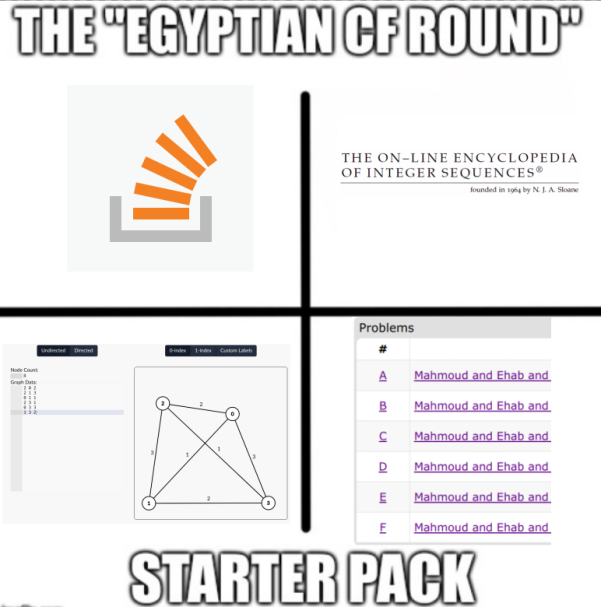Of course, it was a great round, but I guess I have a nice summary of it here:

| # | User | Rating |
|---|---|---|
| 1 | tourist | 3856 |
| 2 | jiangly | 3747 |
| 3 | orzdevinwang | 3706 |
| 4 | jqdai0815 | 3682 |
| 5 | ksun48 | 3591 |
| 6 | gamegame | 3477 |
| 7 | Benq | 3468 |
| 8 | Radewoosh | 3462 |
| 9 | ecnerwala | 3451 |
| 10 | heuristica | 3431 |
| # | User | Contrib. |
|---|---|---|
| 1 | cry | 167 |
| 2 | -is-this-fft- | 162 |
| 3 | Dominater069 | 160 |
| 4 | Um_nik | 158 |
| 5 | atcoder_official | 156 |
| 6 | Qingyu | 155 |
| 7 | djm03178 | 151 |
| 7 | adamant | 151 |
| 9 | luogu_official | 150 |
| 10 | awoo | 146 |
Of course, it was a great round, but I guess I have a nice summary of it here:

Can anyone help me to describe the algorithm for solving this APIO 2012 Kunai?
http://apio-olympiad.org/2012/apio2012-official.pdf
Thanks XD
Hello kids,
I recently learned algorithm for finding bridge edges, but I couldn't find a clean code on it. Can anyone provide a nice implementation for the algorithm (I think it call Tarjan) for finding bridge edges?
Thanks very much!
Hello kids,
I am having a bit trouble with this problem from the IOI 1995. I solved part (1) by removing each node and checking for connectivity, but I cannot know how to solve part two, or give some reformulating in terms of graph theory. I cannot really understand what this part B is saying or asking for. (Some simple condition like part (1))
Does anyone have any ideas?
Thanks very much!
| Name |
|---|


